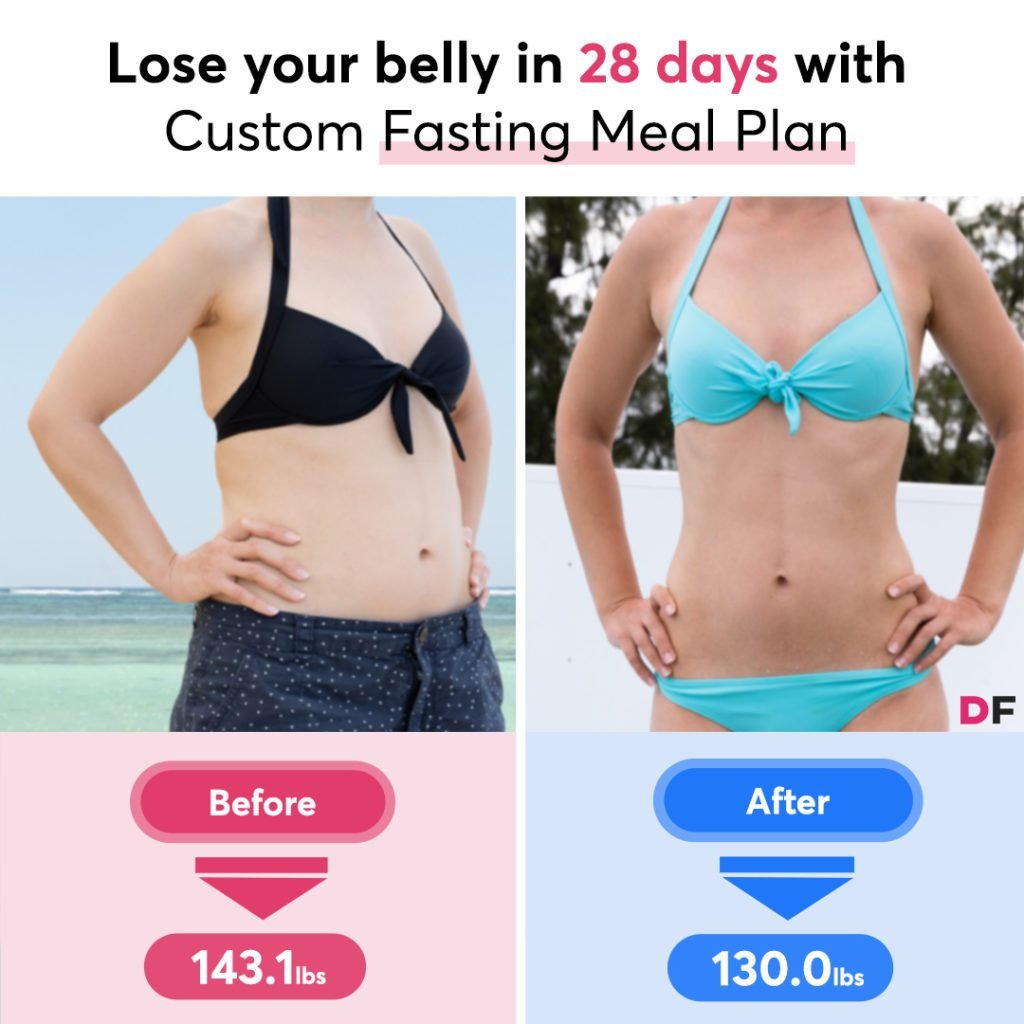Intermittent Fasting
Getting Started With Intermittent Fasting , So you now know that intermittent fasting has a number of benefits for you apart from steady weight loss. What you need to do now is make a start with intermittent fasting. Because there are several methods available a lot of people tend to make starting more complicated than it really is. There is no need to overthink this at all.
In fact you don’t need to think about it hardly at all. You are already fasting every single day with your
sleeping cycle each day. Whether you sleep for 8 hours a day or a little more or less, you do not
consume any calories while you are asleep right?

Getting Started With Intermittent Fasting
Intermittent fasting is a popular dietary approach that involves periods of abstaining from food to achieve various health benefits, including weight loss and improved metabolic health.
Here are six ways to get started with intermittent fasting:
- 12-hour fast: This involves fasting for 12 hours each day, such as between 7 p.m. and 7 a.m. This method is suitable for beginners as it allows for the same number of calories each day and most of the fasting occurs during sleep.
- 16:8 method: Also known as the Leangains diet, this involves fasting for 16 hours and having an 8-hour eating window. For example, you might finish your evening meal by 8 p.m. and skip breakfast the next day, eating again at noon.
- 24-hour fast: This involves fasting for a full 24 hours once or twice a week. This method may be helpful for experienced fasters looking for a more challenging fast.
- 5:2 diet: This involves eating normally for 5 days of the week and restricting calorie intake to 500-600 on the other 2 days.
- Eat Stop Eat: This involves a 24-hour fast once or twice a week.
- Alternate-day fasting: This involves fasting every other day.
To get started with intermittent fasting, choose a method that suits your lifestyle and preferences. It’s essential to stay hydrated, avoid thinking about food, rest and relax, make every calorie count, eat high-volume foods, and increase the taste without the calories. Remember to consult with a healthcare professional before starting any new diet, especially if you have underlying health conditions.
Different types of intermittent fasting
There are several types of intermittent fasting, each with its own unique approach and benefits. Here are some of the most popular methods:
| Method | Description |
|---|---|
| 16/8 method | Also known as the Leangains protocol, this involves skipping breakfast and restricting your daily eating period to 8 hours, such as 1-9 p.m. Then you fast for 16 hours in between. |
| Eat-Stop-Eat | This involves fasting for 24 hours, once or twice a week, such as not eating from dinner one day until dinner the next day. |
| 5:2 diet | With this method, you consume only 500-600 calories on two nonconsecutive days of the week, but eat normally the other 5 days. |
| Alternate day fasting | This involves fasting every other day, either by limiting your calories on fasting days to 500 or by consuming 0 calories on alternate days. |
| Warrior Diet | The Warrior Diet involves eating small amounts of raw fruits and vegetables during the day and eating one large meal at night. |
| Fasting for 12 hours a day | A person needs to decide on and adhere to a 12-hour fasting window every day, which may be a good option for beginners. |
| Fasting for 16 hours | This involves fasting for 16 hours a day, leaving an eating window of 8 hours. |
| Fasting for 2 days a week | This method involves eating standard amounts of healthful food for 5 days and reducing calorie intake on the other 2 days. |
| Time-restricted eating | Similar to the 16/8 method, this involves a daily 16-hour fast and an 8-hour eating window. |
| Alternate-day fasting | The goal is to fast every other day. |
Each method has its own benefits and challenges, and the best one for you depends on your lifestyle, preferences, and goals. It’s essential to consult with a healthcare professional before starting any new diet, especially if you have underlying health conditions.
Getting Started With Intermittent Fasting – Is Intermittent Fasting A Fad?
Absolutely not. All the evidence points to the fact that intermittent fasting is here to stay. It has become a lifestyle choice for hundreds of people, with many more coming on board as research continues to discover and confirm its seemingly endless benefits.
Fasting has been practiced for centuries by various cultures worldwide for both health and spiritual benefits. It is only recently that it has become known in the West as a healthy lifestyle choice.
It’s highly unlikely that the practice of intermittent fasting will go away anytime soon, especially as more and more health experts are acknowledging its benefits.
Whereas health experts had previously warned about the potential dangers of skipping meals, research findings and real–life examples have caused them to do a 180–degree turn. In fact, nutrition experts are so convinced of the benefits of intermittent fasting that they are now recommending it to clients who simply cannot stick to a traditional diet.

how long should you fast for in intermittent fasting
The duration of intermittent fasting varies depending on the specific method you choose. Here are some examples of the typical fasting durations for different methods:
- 16:8 Method: This involves fasting for 16 hours and having an 8-hour eating window, such as skipping breakfast and eating between noon and 8 p.m. .
- 5:2 Diet: This method involves eating normally for 5 days of the week and restricting calorie intake to 500-600 on the other 2 days.
- Alternate Day Fasting: This involves fasting every other day, either by limiting your calories on fasting days to 500 or by consuming 0 calories on alternate days.
- Eat Stop Eat: This involves fasting for 24 hours once or twice a week.
These methods can be adjusted based on your personal preferences and lifestyle, but it’s essential to consult with a healthcare professional before starting any new diet, especially if you have underlying health conditions.
Benefits of Intermittent Fasting – Getting Started With Intermittent Fasting
Intermittent fasting offers a range of health benefits supported by scientific research. Here are some key benefits of intermittent fasting based on the provided sources:
| Benefit | Description |
|---|---|
| Weight Loss | Intermittent fasting can aid in weight loss by reducing calorie intake and boosting metabolism. It helps burn fat, particularly visceral fat around the abdomen, which is linked to various diseases. |
| Improved Heart Health | Studies suggest that intermittent fasting can improve heart health by reducing blood pressure, improving cholesterol levels, and lowering inflammatory markers. |
| Blood Sugar Control | Intermittent fasting may help lower blood sugar levels and reduce insulin resistance, which is beneficial for managing diabetes and reducing the risk of type 2 diabetes. |
| Cellular Repair and Longevity | Fasting triggers a process called autophagy, where cells remove waste material and dysfunctional proteins, potentially protecting against diseases like cancer and neurodegenerative conditions. |
| Brain Health | Intermittent fasting may benefit brain health by promoting the growth of new nerve cells and protecting against neurodegenerative diseases like Alzheimer’s, Parkinson’s, and Huntington’s disease. |
| Reduced Inflammation | Fasting can help reduce inflammation in the body, which is associated with various chronic conditions like arthritis, multiple sclerosis, and asthma. |

Who Intermittent Fasting Is Not For
Intermittent fasting may not be suitable for certain individuals. Those who should avoid intermittent fasting include:
- Children and Teens Under 18: Intermittent fasting may not be appropriate for individuals under the age of 18.
- People with Advanced Diabetes or on Medication for Diabetes: Individuals with advanced diabetes or those taking medication for diabetes should avoid intermittent fasting unless under the close supervision of a physician.
- People with a History of Eating Disorders: Individuals with a history of eating disorders, such as anorexia or bulimia, should avoid intermittent fasting.
- Pregnant or Breastfeeding Women: Pregnant or breastfeeding women should consult with their primary care physician before considering intermittent fasting.
It’s essential to prioritize health and safety when considering any dietary changes, especially if you fall into one of these categories.
Common mistakes to avoid when starting intermittent fasting

- Not Choosing the Right Plan: Selecting a fasting plan that doesn’t suit your lifestyle, schedule, or goals can lead to difficulties in sticking with the regimen.
- Eating Too Much in Your Fasting Window: Overeating during the eating window can hinder weight loss and other health benefits associated with intermittent fasting.
- Not Fueling Properly Before Your Fast: Failing to eat balanced and nourishing meals before starting a fast can impact energy levels and overall well-being.
- Not Drinking Enough Water: Inadequate hydration during fasting periods can lead to dehydration and affect overall health.
- Not Supporting Fasting with Other Lifestyle Choices: Neglecting other aspects of a healthy lifestyle, such as exercise and proper nutrition, can limit the effectiveness of intermittent fasting.
- Giving Up Too Quickly: Being overly critical of slip-ups or not seeing immediate results can lead to discouragement and giving up on intermittent fasting prematurely.
By being mindful of these common mistakes and making adjustments accordingly, individuals can optimize their intermittent fasting experience for better results and long-term success.
